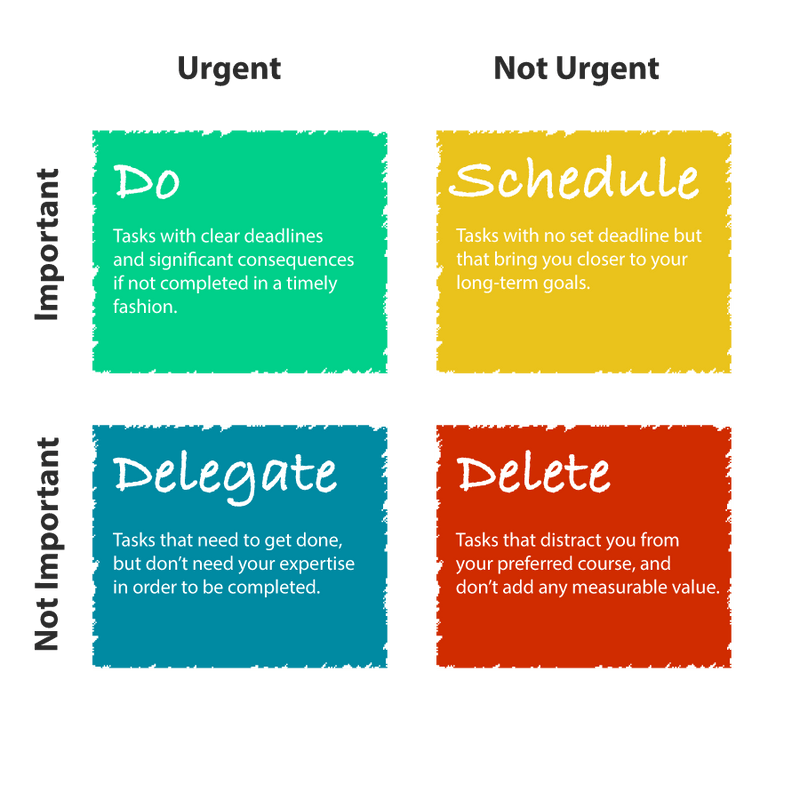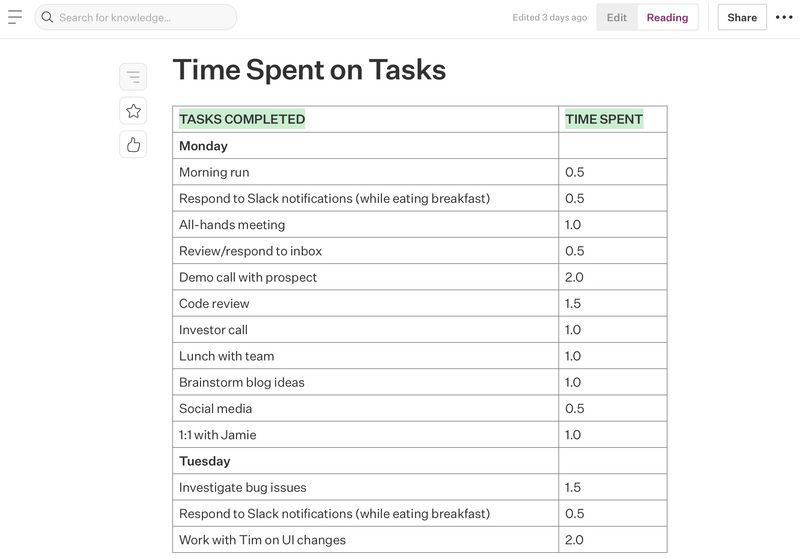The Eisenhower Matrix: Prioritize Your Time on What Matters Most
Most people waste time on tasks that don’t inch them closer to their goals. The Eisenhower Matrix breaks you from that cycle.
Being busy is not the same as being productive. You could spend hours putting out fires and, at the end of the day, be no closer to reaching your long-term goals. This is a costly and emotionally draining way to spend your time.
The issue is poor prioritization. Humans prioritize time-sensitive tasks over any other task, regardless of the long-term payoffs. When you focus too much time on urgent tasks, you neglect the important ones on your to-do list.
It’s easy to get stuck in this reactionary cycle where you constantly put out fires, robbing yourself of the opportunity to work toward your goals. By distinguishing between urgent and important tasks, you can focus more time and energy on the things that matter most. The Eisenhower Matrix helps you make that distinction and improve your time management.
What is the Eisenhower Matrix
“I have two kinds of problems: the urgent and the important. The urgent are not important, and the important are never urgent.” — Dwight D. Eisenhower
The Eisenhower Matrix is a simple decision-making tool that helps you make the distinction between tasks that are important, not important, urgent, and not urgent. It splits tasks into four boxes that prioritize which tasks you should focus on first and which you should delegate or delete.

Also known as the Urgent-Important Matrix, it was popularized by Stephen Covey in his best-selling book, The 7 Habits of Highly Effective People. It was named after Dwight D. Eisenhower, the 34th President of the United States, known for his high output and organization. President Eisenhower is said to have arranged his obligations so that only the important and urgent matters came across his desk.
The Eisenhower Matrix uses this same principle to sort out the less urgent and important tasks on your list, which you can then delegate or not do at all.
The Eisenhower Matrix can help if you:
- Run around putting out fires all day, rather than focusing on tasks you want to complete
- Are busy, but feel like your work has little impact
- Aren’t making progress on long-term goals
- Suffer from procrastination
- Struggle to say “no” when asked to do something
- Have a hard time delegating tasks
The difference between urgent and important tasks
The core principle behind the Eisenhower Matrix is the distinction between important and urgent tasks.
Urgent tasks are time-sensitive and demand your attention. They’re tasks you feel obligated to address. Focusing on urgent tasks puts you in a reactive mindset, which can make you feel defensive, rushed, and narrowly focused.
Important tasks contribute to your long-term mission, values, and goals. They may not yield immediate results (making them easy to neglect). Sometimes important tasks are also urgent — but usually not. Focusing on important tasks puts you in a responsive mindset, which can make you feel calm, rational, and open to new ideas.
Note: If you put off important tasks long enough, they can become urgent.
People tend to believe that all urgent tasks are also important — when frequently, they are not. This misrepresentation may have to do with our preference for focusing on short-term problems and solutions.
But happiness and fulfillment come when we focus on the long-term, not the short-term and urgent.
The quadrants of the Eisenhower Matrix
The Eisenhower Matrix is divided into four parts:
- Quadrant 1: Important and urgent / Do
- Quadrant 2: Important but not urgent / Schedule
- Quadrant 3: Urgent but not important / Delegate
- Quadrant 4: Not important, not urgent / Delete
1. Urgent and important tasks
Urgent and important tasks are crises with due dates — such as a critical bug fix for your SaaS tool.
Do these tasks first. They require your immediate attention.
2. Not urgent but important tasks
Not urgent but important tasks help you achieve your goal — and don’t have a pressing deadline.
Schedule these tasks to do later.
Productive and successful people spend most of their time here. For them, this quadrant yields the most satisfaction. Covey called it the Quadrant of Quality.
Most people, however, don’t spend enough time here because they don’t know what’s important to them or because they’re interrupted by urgent tasks.
3. Urgent and not important tasks
Tasks that fall in this quadrant are nearly always interruptions from your preferred course. These are tasks where you help others meet their goals.
Delegate these tasks to others.
Most people spend the majority of their time in this quadrant. They believe they’re working on urgent tasks that are important to them when, in reality, completing these tasks does nothing to inch them closer to their long-term goals.
4. Not urgent and not important tasks
These tasks aren’t pressing, nor do they help you reach your long-term goals. They’re simply distractions from what matters most.
Delete these tasks from your list.
Prioritizing your tasks
First, track your time for one week to assess where you spend your time in the matrix. You can use a dedicated task management tool or simply track your time in 30-minute increments in a spreadsheet.

After one week, organize your completed tasks into the appropriate quadrant using these criteria:
- Was this urgent for me?
- Was this important to me?
“Me” is the integral word here — you’re organizing these tasks based on your goals, not someone else’s.
Now that your tasks are sorted, take note of the quadrant with the most tasks. If most of your tasks live inside Quadrant 2, congratulations! You have a good grasp of what matters most in your life.
If you’re a mere mortal like most of us, though, here’s how you can rebalance your matrix.
Quadrant 1
To reduce the number of Quadrant 1 tasks you have, invest time in planning to anticipate and prevent problems.
What changes can you make to avoid unexpected problems from arising? This may include collaborating with colleagues, clients, or supervisors to restructure your workflow.
If one person or entity is the source of Quadrant 1 tasks, you may need to find a systemic solution to prevent important and urgent issues from constantly arising.
Quadrant 3
To reduce Quadrant 3 tasks, create a strategy to delegate, eliminate, or limit the amount of time you spend on these tasks.
For example, batch these tasks together to complete in one sitting, or share how much time you spend on busywork with your supervisor. If you’re a manager, let your team know you’ll be delegating tasks to them so you can reprioritize your schedule.
Quadrant 4
If most of your time is spent in Quadrant 4, you likely feel stressed and unfulfilled. Continue to track your time to identify which tasks consume the most time. Then, develop a plan to delete or limit them. Seek advice from a colleague or supervisor — their perspective might make it easier to identify which tasks you can delegate or delete.
Investing time in making time
Repeat the above process every week for a month. Compare each week’s results to see if your efforts result in more time spent in Quadrant 2: the Quadrant of Quality.
Continue using the Eisenhower Matrix to organize your day even as your time and tasks shift towards Quadrant 2. This will often include abstract tasks like strategy development and relationship building. These tasks don’t have deadlines, making them easy to put aside, but they are directly aligned with your long-term goals, values, and happiness.
“The key is not to prioritize what’s on your schedule, but to schedule your priorities.” — Stephen Covey
Most people struggle to find time in their busy schedules to tackle those important but not urgent tasks. Integrating the Eisenhower Matrix into your daily workflow will help you schedule your priorities based on what’s most important to you.

